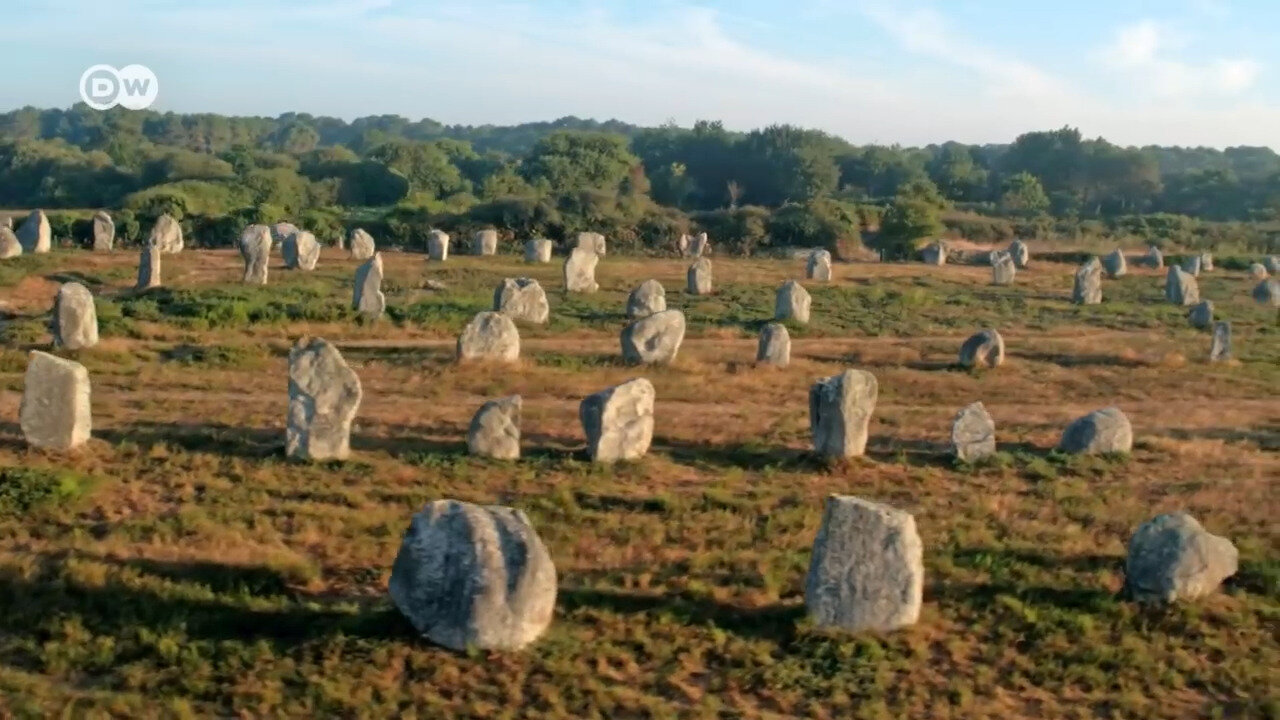Premium Only Content

Secrets of the Stone Age (1-2)
During the Stone Age, humans shifted from the nomadic lifestyle to the more settled life of farmers. A documentary on an important period of human history.
Around 12,000 years ago, humans underwent a transition from nomads to settlers. That epoch, the Stone Age, produced monumental building works. Part 1 of this two-part documentary illuminates the cultural background of these structures and shows the difficulties Stone Age humans had to contend with. Until around 10,000 BC, humans lived as hunters and gatherers. Then an irreversible change began. Settlements formed. "For millions of years humans lived as foragers and suddenly their lives changed radically. This was far more radical than the start of the digital age or industrialization," says prehistorian Hermann Parzinger, president of the Prussian Cultural Heritage Foundation. For a long time, scholars believed that a sedentary lifestyle was a prerequisite for constructing large buildings. Then archaeologist Klaus Schmidt discovered Göbekli Tepe in southern Turkey, a 12,000-year-old complex of stone blocks weighing up to 20 tons. Its builders were still hunter- gatherers. They decorated the stone columns with ornate animal reliefs. How these structures were used and who was allowed access to them remains a mystery. But we now know that the site was abandoned and covered over once settlements took root. Human development continued its course. The discovery of agriculture and animal husbandry led to larger settlements, a changed diet and ultimately to dependence on material goods. This social upheaval in the late Neolithic period has influenced our lives up to the present day. But experts agree that the monuments of the Stone Age prove that humans have gigantomanic tendencies and a need to immortalize themselves.
-
 23:50
23:50
marcushouse
16 hours ago $5.00 earnedStarship Is About to Do Something It’s Never Done Before - A Huge First!
47.4K17 -
 LIVE
LIVE
FrizzleMcDizzle
2 hours agoElden Ring Seamless COOP
113 watching -
 41:56
41:56
CatfishedOnline
2 days agoKinky Man Sends 401k to Romance Scammer from Ghana!
32.6K9 -
 1:53:55
1:53:55
Nick Shirley
19 hours ago $8.57 earnedIRL Confronting Anti-Trump & Anti-Elon Protesters
38.4K124 -
 16:18
16:18
Tactical Advisor
1 day agoRetiring My Patrol Rifle | Old vs New
34K2 -
 22:29
22:29
JasminLaine
20 hours agoAwkward Silence After Poilievre FACT CHECKS Reporter—Carney’s Face SAYS IT ALL
34.7K39 -
 9:48
9:48
VSOGunChannel
20 hours ago $2.35 earned25% of ATF Getting Fired? SUPER ATF on Hold?
32.9K29 -
 11:09
11:09
ariellescarcella
1 day ago"All 4 Of My Kids Are Trans" : NOOOOOO
30.7K33 -
 12:35
12:35
GoldenWebb
1 day ago $0.38 earnedMP5/K Super Safety
19.1K6 -
 2:45:42
2:45:42
Badlands Media
1 day agoDevolution Power Hour Ep. 343: System Shock
178K166